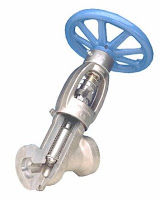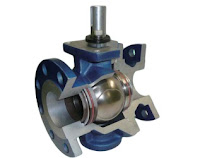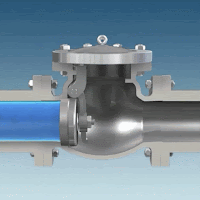 |
| Industrial multi-port ball valves (Flo-Tite) |
Valves are mechanical devices, essential control and regulating components of a piping system. They are the controlling element within any fluid handling systems; they control the flow and/or pressure of fluids such as liquids, gases, vapors, slurries, and more.
Because of the variety of fluids valves can accommodate, care and consideration are needed when selecting a valve that provides the right service level at the right price point.
For this reason, the types, models, and classifications of valves vary, however, they all offer the same basic function:
- Stopping and starting flow
- Increasing or reducing flow
- Controlling the direction of flow
- Regulating a flow or process pressure
To begin, the first classification of valves are the valves themselves; there are seven common types: gate, globe, plug, ball, butterfly, check, and diaphragm. Each of these valves has models, the second classification. Depending on the valve of choice, the valves can be self-operated, manually operated, or controlled with an actuator that is pneumatic, electric, or hydraulic.
The third classification is based on mechanical motion of the valve closure.
 |
Internal view of
linear industrial valve
(Conval) |
Linear Valve: the valve closure moves in a straight line between open and closed positions,
providing fully closed, a range of partially open, and fully open positions. Partially open positions provide throttling of the fluid flow at levels between no flow and full flow. Gate, globe, and diaphragm valves are characterized by linear motion. These valves are also referred to as multi-turn valves, because of the mechanical drive arrangement that some utilize to move the valve closure.
 |
Internal view of rotary (ball) valve.
Courtesy of Flo-Tite. |
Rotary Valve: the valve closure travels along a circular or angular path; e.g. butterfly, plug, and ball valves. Rotary valves generally require an approximate quarter turn to complete the motion between fully open and fully closed positions.
There are many product and performance attributes to consider in the valve selection process, low maintenance burden and cost usually being highly ranked. It is also important to match the valve construction to the fluid the valve will be handling, e.g. is it corrosive or erosive? The level of physical stress, including frequency of use, temperature, pressure, and the speed at which flow is to be interrupted may be of concern.
Ultimately, each industrial process application will benefit from a carefully selected valve that closely matches the process performance requirements.
Share your fluid control requirements and challenges with an industrial valve expert, combining your own process knowledge and experience with their product application expertise to develop effective solutions.









